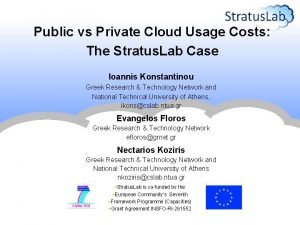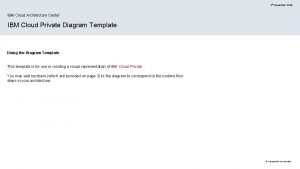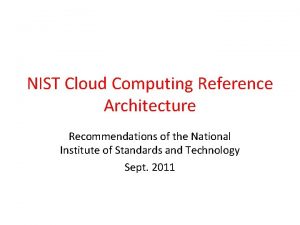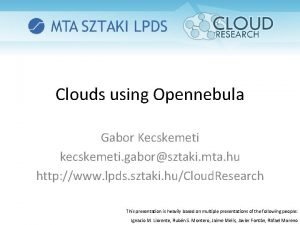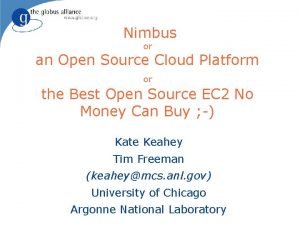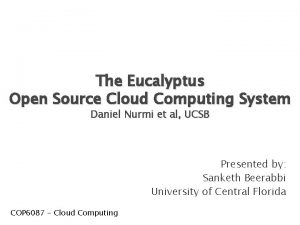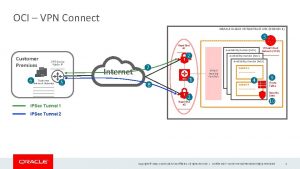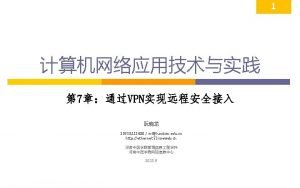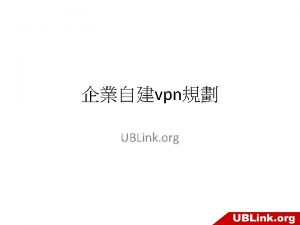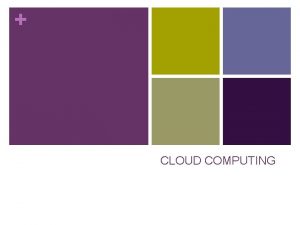A Dynamic VPN Architecture for Private Cloud Computing












- Slides: 12

A Dynamic VPN Architecture for Private Cloud Computing 2011 Fourth IEEE International Conference on Utility and Cloud Computing Wen-Hwa Liao, Shuo-Chun Su Tatung University 1

Virtual Private Network(VPN) A virtual private network extends a private network across a public network, such as the Internet. p Technical p n n Tunneling Encryption & Decryption Key management Authentication 2

VPN Framework (Full-Mesh) p Every node is connected directly to others. p Advantage n n Shortest route No bottleneck Internet Gateway p Disadvantage n n VPN tunnel Each gateway(GW) must have an Internet key exchange(IKE) policy for each of the other GWs Can not traffic control 3

VPN Framework (Hub-and-Spoke) p Every GWs connects to Hub-GW. p Advantage n n Each GW needs only one IKE policy to communicate with all other GWs. Traffic control Hub-GW Internet p Disadvantage n n Gateway VPN tunnel Delay bottleneck 4

VPN Framework (Bipartite) Based on hub-and-spoke and full-mesh p The corporation and the cloud service provider can be deemed as spokes under the network management of hub-GW. p 5

System Architecture CE:Customer Edge PE:Provider Edge 6

Packet Format p Connection between CE and PE 7

Exchange modes p CE_VLAN_request n p CE_VLAN_response n p Querying about permission for connection CE_MAC_response n p VLAN ID CE_MAC_request n p Establishing VLAN Checking in the database whether the connection is permitted CE_MAC_terminate n Delete the VLAN ID for connecting 8

Process of adding a new connection 9

Process of erasing a connection 10

Analysis Result 11

Conclusion The user needs only to connect hub-GW by using VPN like PPTP, IPsec or SSL without having to implement a complex network framework. p The management of hub-GW uses bipartite. p Needing to maintain extra table. p 12
 Public cloud vs private cloud cost analysis
Public cloud vs private cloud cost analysis Seven step model of migration into cloud
Seven step model of migration into cloud Ibm cloud private architecture
Ibm cloud private architecture Nist cloud architecture
Nist cloud architecture Opennebula architecture in cloud computing
Opennebula architecture in cloud computing Nimbus cloud computing
Nimbus cloud computing Globus toolkit architecture in cloud computing
Globus toolkit architecture in cloud computing Eucalyptus open source
Eucalyptus open source Green cloud computing architecture
Green cloud computing architecture Vpnsa
Vpnsa Vpn slides
Vpn slides Dynamic multipoint vpn
Dynamic multipoint vpn Oracle cloud ipsec
Oracle cloud ipsec
